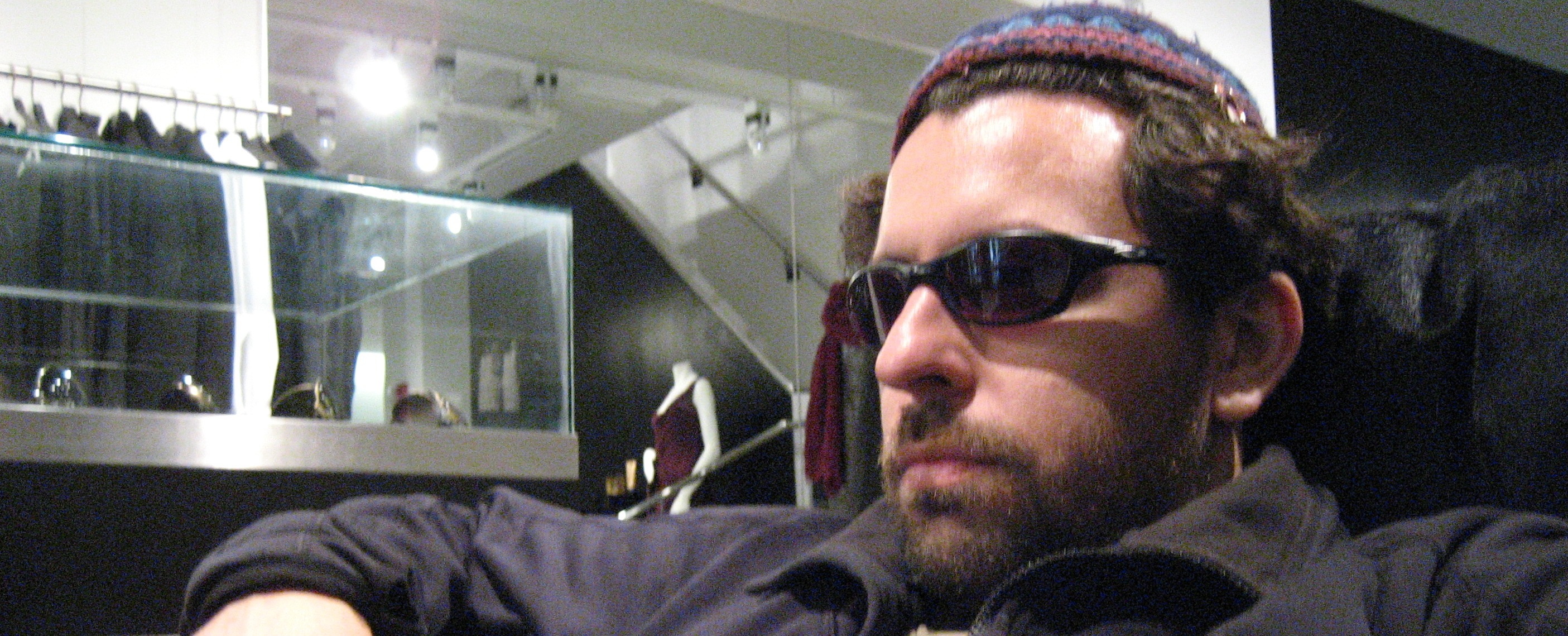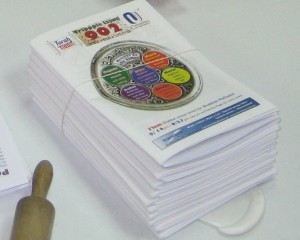Bite-size Torah
Not just another Parasha sheet; serious about Torah Tidbits
click here for original posting
BY Amihai Zippor
As Torah Tidbits is about to enter its 18th year, editor-in-chief Phil Chernofsky attempts to explain how his weekly booklet on the parsha, or Torah portion, has impacted its readers.
“One of my friends complained to me that when he reads Torah Tidbits it sounds like chopped liver on a cracker. I said, ‘That’s exactly what I want it to sound like,’” he told In Jerusalem. “This is not a serious journal. You have books of learning for that. This is meant to have a light touch; but the content is heavy, as there’s a lot of things to learn.”
An oleh from New York, Chernofsky began writing Torah Tidbits as the Orthodox Union Israel Center’s associate director. Instructed to make a weekend flyer for distribution to English-speaking synagogues around Jerusalem listing the OU’s activities, he felt uncomfortable about circulating advertisements on Shabbat and suggested a compromise: Make one side a Dvar Torah, or lesson on the parsha, and the other side a list of promotions.
Approved, Chernofsky called the Torah side of the sheet “Torah Tidbits” after similar teachings he had given students as an educator in the US. With an initial run of 60 copies, it quickly grew at a time when such Parsha sheets in English were rare. Today, each weekly edition of Torah Tidbits averages 64 pages with a distribution rate of 8,600.
“This is a labor of love. And as hard as it is, I never resent it, even though there are all-nighters and occasional feedback criticizing typos, spelling mistakes or wrong page numbers. Things fall through the cracks, but by and large it’s appreciated,” says Chernofsky.
Torah Tidbits generally contains a plethora of information from the wellspring of Jewish tradition, but its presentation is very much imbued with Chernofsky’s personality, often including humor and subtle references to popular culture.
Chernofsky is fascinated with numbers and statistics. The “Parsha Stats” section mirrors one of his favorite pastimes, baseball. Every week, he lists facts and figures on the parsha. For example, in the Vayikra (Leviticus) issue he stated that the portion is average length but the verses are on average longer than in the rest of the Torah.
He’s also fond of making up new statistical categories. “The portion of Kedoshim has 51 commandments but is very small with only 64 verses. Ki Teitze, which is very long, has 74, making it top in commandments. But if I could create a new statistic called ‘mitzva density’ measuring its commandments per 1,000 verses, Kedoshim is at top,” he explains. “Per verse they fly at you at a greater rate. Some people say, ‘Wow, I’m glad you showed that to me.’ Others couldn’t care less. But that’s my thing,” he says.
On Wednesdays and Thursdays a rotating group of 30 volunteers, mainly female senior citizens, congregates in the basement cafeteria of the Israel Center, working shifts folding thousands of booklets. Commitment to their posts and the social environment is strong, as they’ve been known to reschedule doctors’ appointments and cancel lunch dates if it conflicts with folding.
Assembled in-house but without special machinery, Torah Tidbits volunteers fold the booklets using methods of smoothing out the crease that vary from using the ends of dinner knives and rolling pins to, most recently, a cake icing spreader. One volunteer even knows how to pre-stretch rubber bands so they won’t break around bundles of 20 or more.
Chernofsky’s wife, Toni, manages distribution and the complicated task of updating weekly booklet counts to almost 100 locations around the country, including a by-request-only large-print edition for the visually challenged. Creative efforts are made to find volunteers to haul bundles to destinations around the country, sometimes as far north as the Golan Heights and Safed.
When a shul in Beersheba requested copies, an arrangement was made whereby a bundle was picked up at the Israel Center on Wednesday evening and brought to Hebron early the next day. From there, a man from Beitar who goes swimming in Beersheba handed it to another man at the pool, who delivered it to the synagogue.
In Jerusalem there are door-to-door deliveries. In one instance, 1,500 copies are sent by taxi to a large company. Upon arrival, an e-mail goes out to company employees who live in several nearby communities, upon which they pick up their designated bundles and make the drop-offs when they return home.
Occasionally the Chernofskys receive a complaint that a bundle never arrived, prompting an investigation. The problem is corrected, but the incident results in an unused set. According to a rabbinical ruling given to Torah Tidbits, unused copies must not be trashed but should be recycled. However, those that were read are considered on the level of holy texts and must be discarded in a respectful manner through burial. Chernofsky stresses that additional rulings exist but this was the one that was given to him.
In recent years, several other issues associated with parsha sheets in the synagogue have arisen. Once Chernofsky received an e-mail from a rabbi criticizing Torah Tidbitsbecause people were reading it in shul when they were supposed to be focused on the service. In the same week, another rabbi praised the arrival of the booklet in his synagogue because the congregants were never so quiet.
Though general rabbinic rulings exist regarding proper synagogue etiquette, the official policy of Torah Tidbits is if you’re going to talk to the person next to you, it’s better to read the booklet. But if you can be immersed in the prayer, that’s far more important.
Rabbi Mordechai Goldberg of Kehilat Mizmor L’Dovid in Talpiot believes the parsha sheets are positive but cites two concerns.
“Obviously there is nothing wrong with them, and it’s good that people learn about the parsha. What I don’t like about them is that many have very specific agendas, especially political agendas, which I don’t think is necessary, as people who are not so knowledgeable may not distinguish between the political agenda and the Torah,” he says.
After years of seeking donors, Torah Tidbits is entirely funded by its classified section. Most ads are found toward the end of the booklet, but some are noticeably visible between summaries of the Parsha.
Regarding advertisements found in many parsha sheets, Goldberg notes that it is commonly understood that one should try to avoid reading the ads on Shabbat because they are not in the spirit of Shabbat. “Obviously people read them, and there’s nothing you can do. But I guess the fact that they are there is an economic necessity and is how they are funded,” he says.




